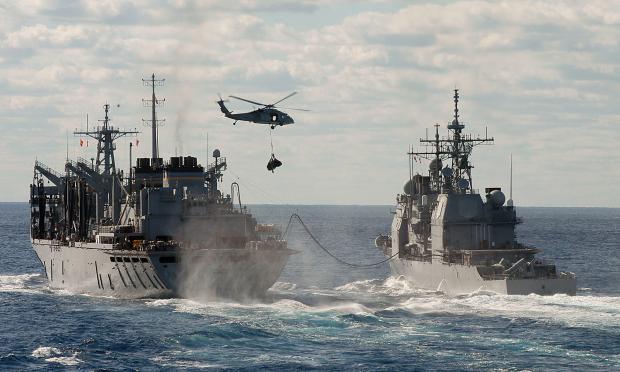Military vessels that do long-range missions, many times need refueling during their operations. If there isn't a refueling station nearby, a special ship is sent to refill the fuel tank of the ship. That action is called Replenishment At Sea and often is referred to as RAS.
Firstly, let us mention that there are other methods of RAS, but we will describe the most frequent one.
Alongside Connected Replenishment
Military ships, contrary to ordinary vessels, can be refueled while sailing! This refueling method includes alongside connection that lets ammunition, freshwater, and other goods be moved from one ship to another.
In the '50s and '60s, the US Navy developed a refueling ship that worked with a system that was later called Alongside Connected Replenishment. This method/system was selected because the ships have a safe distance between them.
The supply vessel keeps a stable speed of 12 or 16 knots. This speed provides better control for the transfer. Then, the ship that will receive the refueling approaches alongside the refueling ship at a distance of almost 30m. After that, a specific design (pneumatic line thrower or shot line) shots a line to the other ship, and an overpass is created between the ships.
Due to the sizes of some ships, more than one overpass can be created, for faster transfer or transfer of different types of cargo.
Most ships receive refueling on either side, however, the US Navy aircraft carriers can be refueled only from one side. The refueling ships are capable of refueling two sips at a time, one on each side.
The specific method of Alongside Connected Replenishment is pretty dangerous, as two or three vessels sail side-by-side with stable speed for a long time. The slightest mistake could cause several damages to ships. Because of that, such actions require capable helmsmen. Each crew member of the bridge pays significant attention to the speed and course. The risk is increased when two ships are being refueled at the same time.








